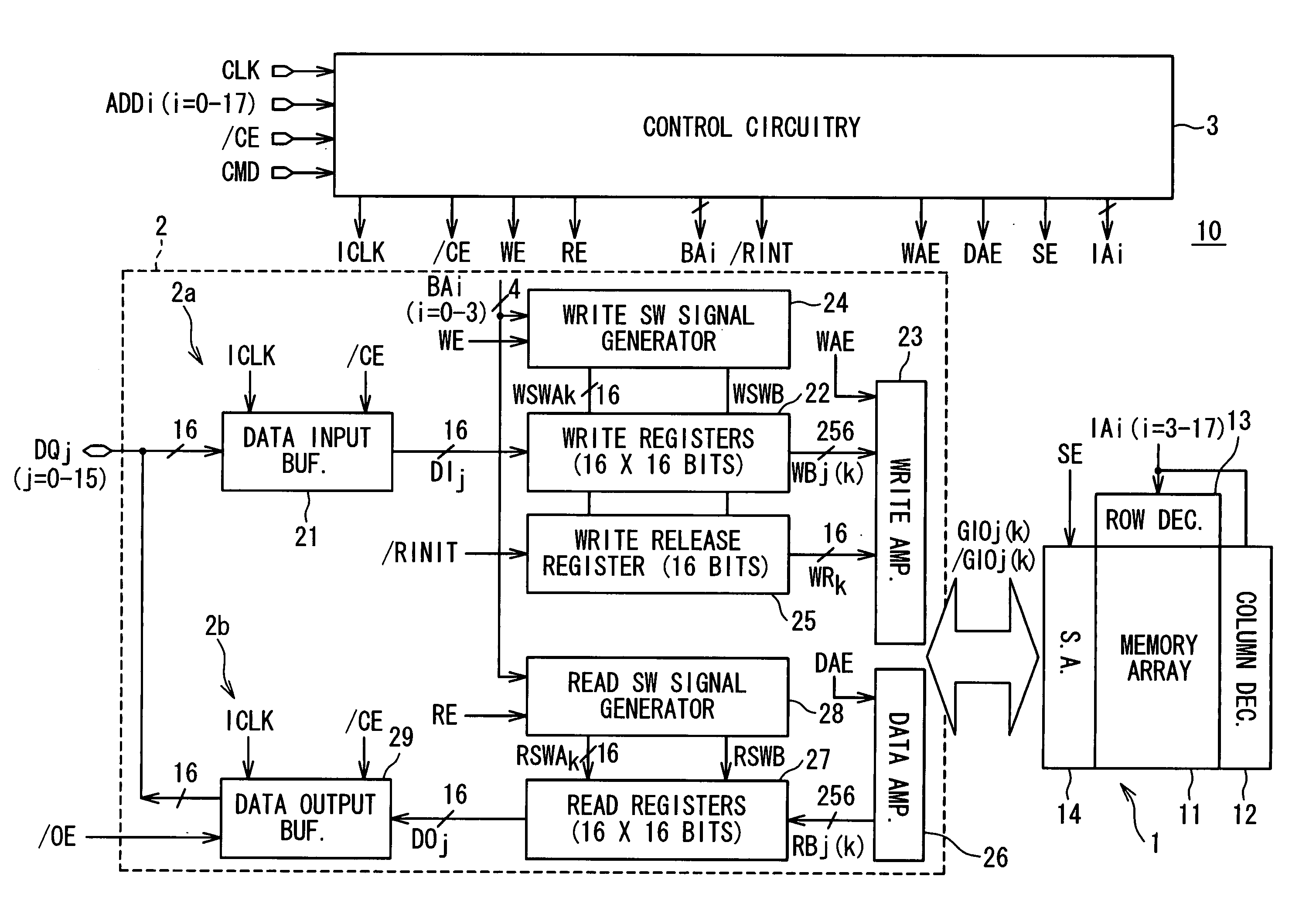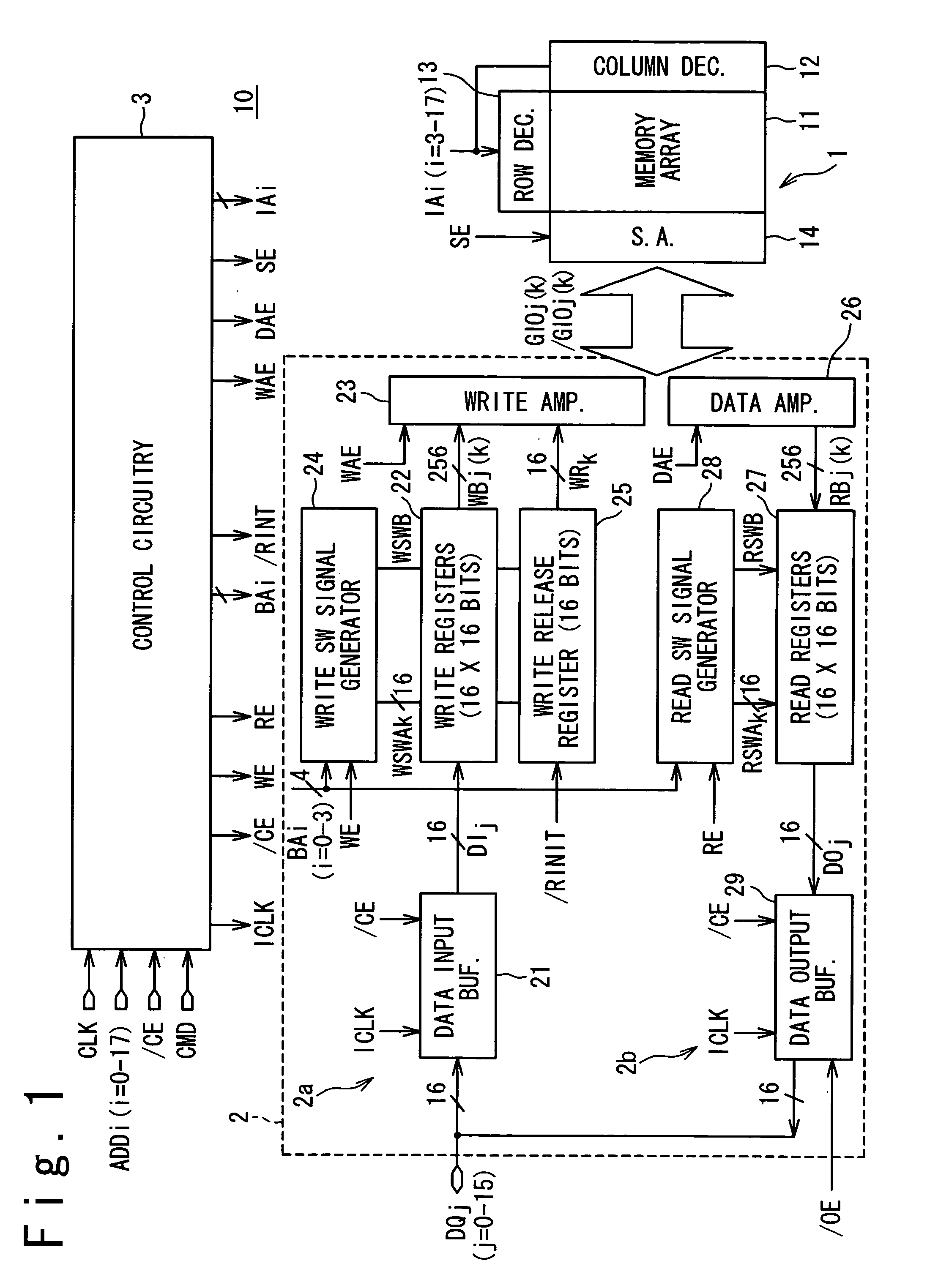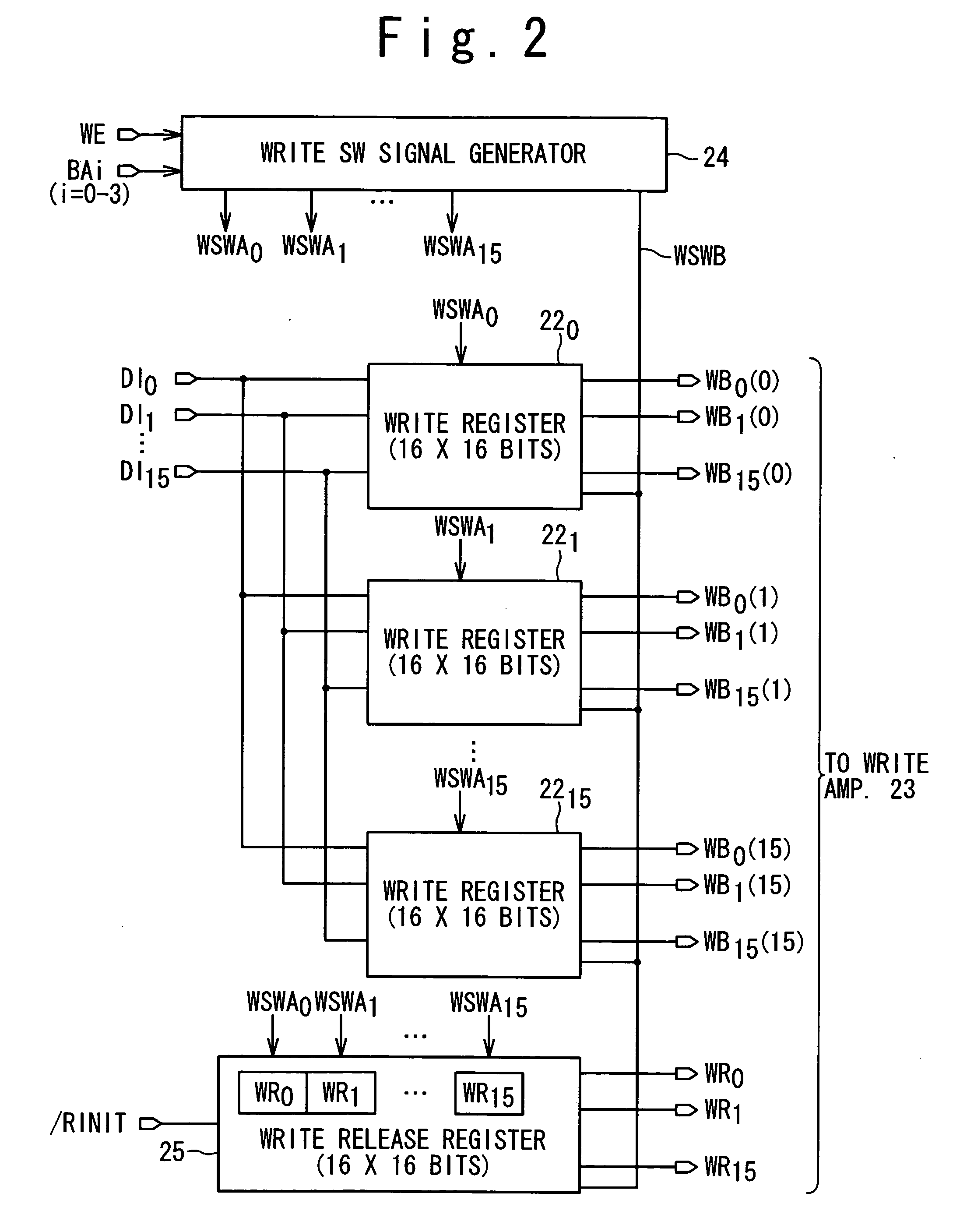Semiconductor memory device and operating method of the same
a memory device and semiconductor technology, applied in the field of semiconductor memory devices and methods of operating the same, can solve the problems of pseudo sram suffering from the reduced access speed of the memory array, sram may dissatisfy a required specification, and the recent requirements of electronic devices, so as to improve the flexibility of burst write operation
- Summary
- Abstract
- Description
- Claims
- Application Information
AI Technical Summary
Benefits of technology
Problems solved by technology
Method used
Image
Examples
first embodiment
(Device Structure)
[0047] In a first embodiment, a pseudo SRAM 10 is provided with a memory circuitry 1, a data interface circuitry 2, and a control circuitry 3.
[0048] The memory circuitry 1 is composed of a memory array 11, a column decoder 12, a row decoder 13, and a sense amplifier circuit 14. The memory array 11 includes DRAM cells arrange in rows and columns (not shown). The column decoder 12, the row decoder 13 and the sense amplifier circuit 14 are used to provide access to a selected memory cell. Specifically, the column decoder 12 selects the column associated with the selected memory cell, and the row decoder 13 selects the row associated with the selected memory cell. The sense amplifier circuit 14 is used for identifying the data stored in the selected memory cell, and for writing desired data into the selected memory cell.
[0049] The data interface circuitry 2 provides access to the memory circuitry 1 based on burst transmission. The data interface circuitry 2 is conn...
second embodiment
(Device Structure)
[0103]FIG. 10 is a block diagram illustrating the structure of the pseudo SRAM 20 in a second embodiment. The structure of the pseudo SRAM 20 in the second embodiment is almost similar to that of the pseudo SRAM 10 shown in FIG. 1; the difference is that the pseudo SRAM 20 is designed to provide individual data access of upper and lower bytes for the memory array 11; the upper bytes designates the bytes associated with the data pins DQ8-DQ15, while the lower bytes designates the bytes associated with the data pins DQ0-DQ7. In order to achieve the individual data access of the upper and lower bytes, a set of byte select signals / UB and / LB are externally provided for the pseudo SRAM 20. The upper byte select signal / UB is used to enable the access of the upper bytes, while the lower byte select signal / LB is used to enable the access of the lower bytes. More specifically, the structure of the pseudo SRAM 20 is different from that of the pseudo SRAM 10 shown in FIG...
PUM
 Login to View More
Login to View More Abstract
Description
Claims
Application Information
 Login to View More
Login to View More - R&D
- Intellectual Property
- Life Sciences
- Materials
- Tech Scout
- Unparalleled Data Quality
- Higher Quality Content
- 60% Fewer Hallucinations
Browse by: Latest US Patents, China's latest patents, Technical Efficacy Thesaurus, Application Domain, Technology Topic, Popular Technical Reports.
© 2025 PatSnap. All rights reserved.Legal|Privacy policy|Modern Slavery Act Transparency Statement|Sitemap|About US| Contact US: help@patsnap.com



